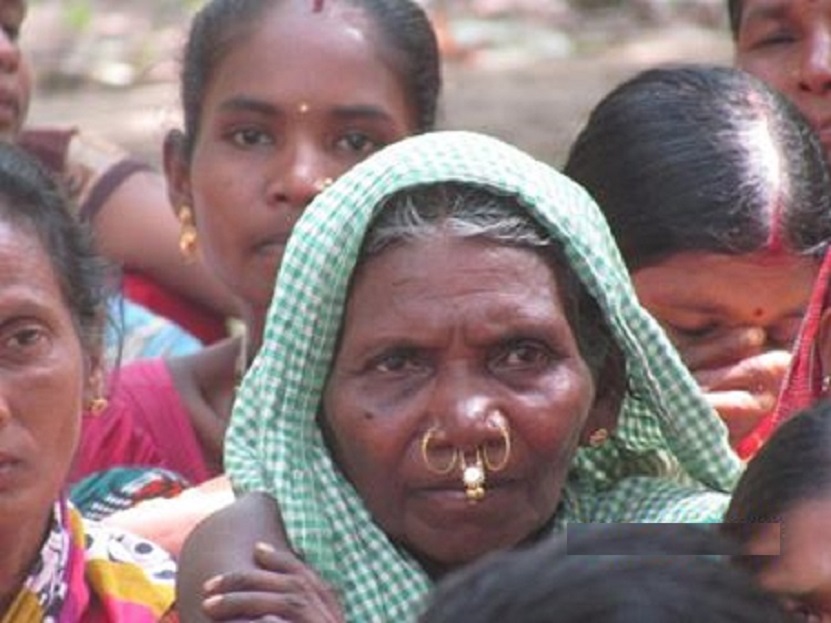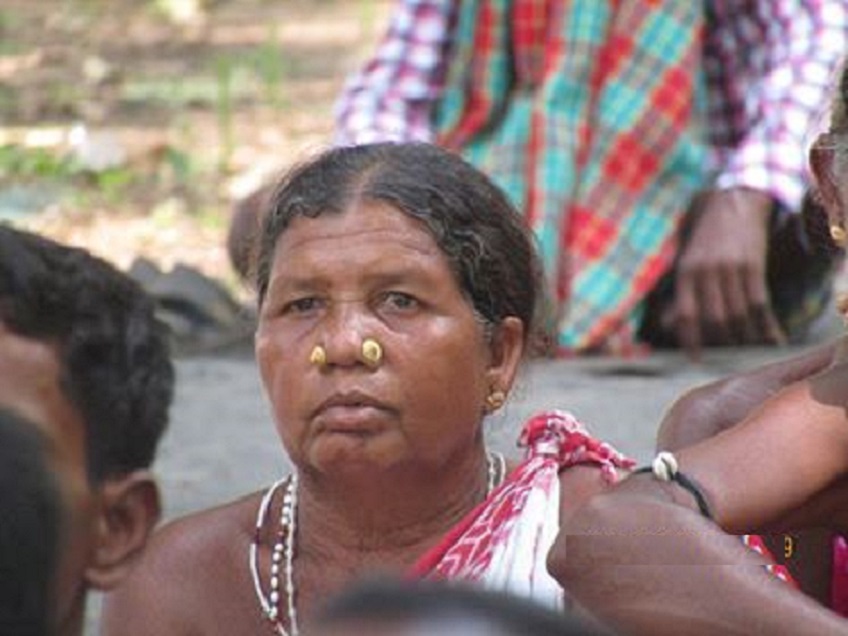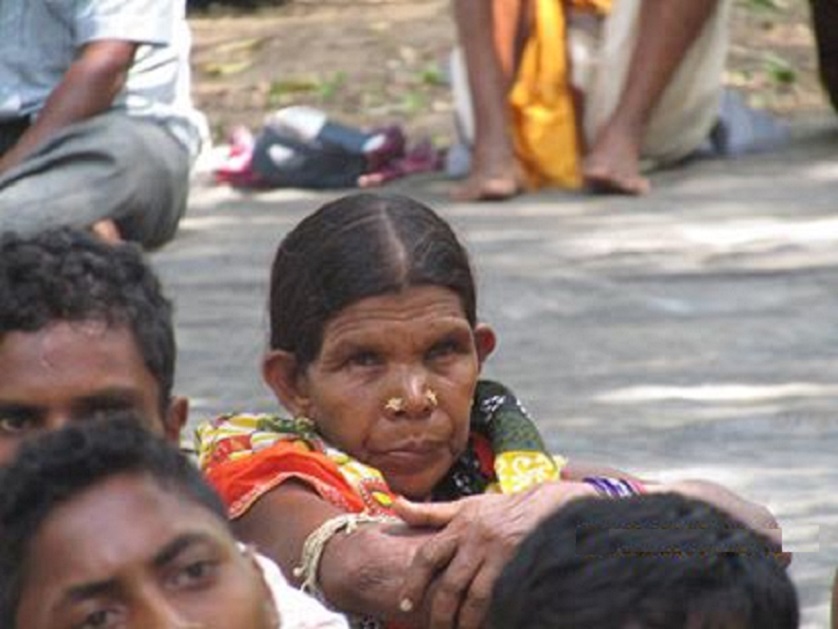Rona
Rona, in 1909
This article is an excerpt from Government Press, Madras |
The Ronas are a class of Oriya-speaking hill cultivators, who are said8 to “hold a position superior in the social scale to the Parjas (Porojas), from whom, by [258]compulsion and cajolery, they have gotten unto themselves estates. They are not of very long standing (in Jeypore). Every Parja village head is still able to point out the fields that have been taken from him to form the Rona hamlet; and, if he is in antagonism with a neighbouring Parjā village on the subject of boundaries, he will include the fields occupied by the Rona as belonging de jure to his demesne.” In the Madras Census Report, 1891, it is noted that “the Ronas are supposed to be the descendants of Ranjit, the great warrior of Orissa. In social status they are said to be a little inferior to the so-called Kshatriyas. Some of them serve as armed retainers and soldiers of the native chiefs, and some are engaged in trade and cultivation.”
For the following note I am indebted to Mr. C. Hayavadana Rao. The word rona means battle. According to a tradition current among the Ronas, their ancestors, who were seven brothers, came many generations ago to Nundapūr, the former capital of the Rājas of Jeypore, and made their first settlement in Borra.
The caste is divided into four endogamous divisions, viz.:—
• (1) Rona Paiko.
• (2) Odiya Paiko, said to rank a little higher than the preceding.
• (3) Kottiya Paiko, the descendants of Rona Paikos and women of hill tribes.
• (4) Pattiya Paik, the descendants of Kottiya Paikos and women of hill tribes.
As examples of septs among the Ronas, the following may be cited:—Kōra (sun), Bhāg (tiger), Nāg (cobra), Khinbudi (bear), and Matsya (fish).
When a girl reaches puberty, she is placed apart in a portion of the house where she cannot be seen by males, even of the household, and sits in a space enclosed by seven arrows connected together by a thread. On the seventh day she bathes, and is presented with a new cloth. It is customary for a man to marry his paternal uncle’s daughter. At the time of marriage, the bridegroom’s party repair to the house of the bride with a sheep, goat, rice, and a female cloth with a rupee placed on it, and four quarter-anna bits inserted within its fold. The cloth and money are taken by the bride’s mother, and the animals and rice are used for a feast. On the following day, the bride goes to the house of the bridegroom, in front of which a pandal (booth), made out of nine poles of the nērēdu tree (Eugenia Jambolana) has been set up. At the auspicious hour, which has been fixed by the Dēsāri who officiates, in the absence of a Brāhman, at the marriage rites, the bride and bridegroom take their seats in the pandal with a curtain between them. The Dēsāri joins their hands together, and ties to the ends of their cloths a new cloth to which a quarter-anna piece is attached, betel leaves and nuts, and seven grains of rice. The curtain is then removed, and the pair enter the house. The knotted new cloth is removed, and kept in the house during the next two days, being untied and re-tied every morning. On the third day, the couple again come within the pandal, and the new cloth is again tied to them. They are bathed together in turmeric water, and the cloth is then untied for the last time. The rice is examined to see if it is in a good state of preservation, and its condition is regarded as an omen for good or evil. The remarriage of widows is permitted, and a younger brother usually marries the widow of his elder brother.
There is for all the Ronas a headman of their caste, called Bhatho Nāyako, at Nundapūr, who decides offences, such as eating in the house of a man of inferior caste, and performs the ceremonial cleansing of a man who has been beaten with a shoe. Divorce and civil suits are settled by a caste council.
The Ronas worship the deity Tākurāni. They wear the sacred thread, and are said to have bought the right to do so from a former Rāja of Jeypore. They also wear a necklace of tulsi (Ocimum sanctum) beads. The necklace is first tied on by Oriya Brāhmans from Orissa, or Vaishnava Brāhmans from Srikūrmam in Ganjam, who pay periodic visits to the community, and receive presents of money and food. Rona Paikos will eat at the hands of Brāhmans only, whereas Puttiya Paikos will eat in the houses of Koronos, Mālis, Kummāras, and Gaudos. All eat animal food, beef and pork excepted. Some Ronas are still the armed retainers of the Jeypore Rājas, and their forefathers were versed in the use of the matchlock. Some Ronas at the present day use bows and arrows. The caste title is Nāyako.
Rona
(From People of India/ National Series Volume VIII. Readers who wish to share additional information/ photographs may please send them as messages to the Facebook community, Indpaedia.com. All information used will be gratefully acknowledged in your name.)
Synonyms: Kumar, Kumbhakar, Kumhar, Rana Paika [Orissa]
Groups/subgroups: Kottiya Paiko, Odiya Paiko, Paik, Paiko, Pattiya, Rona Paiko [E. Thurscon] Titles: Rona [Orissa] Nayako [E. Thurston]
Surnames: Allangi, Buridi, Dholopathi, Gollori, Kinchoi, Korra (Sun) [Andhra Pradesh] Devi, Rona [Orissa] Anantra, Nageswar [Orissa] Bhag (tiger), Khinbudi (bear), Kora (sun), Matsya (fish), Nag (cobra) [E. Thurston] Gotra: Ananta, Kashyap, Nageswar, Parasar [Orissa]
See also
Rona


